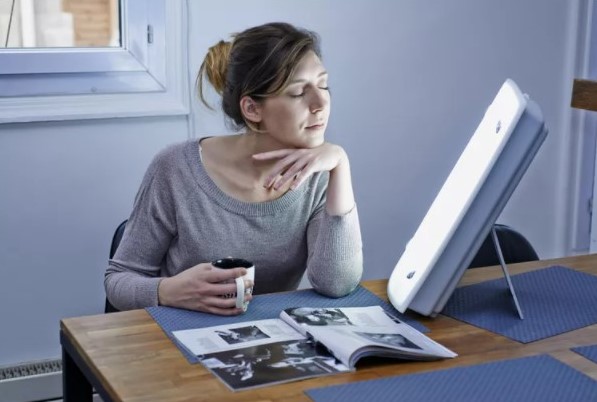By Dr. Alan Leavens
Seasonal Affective Disorder (SAD) is a depressive mood disorder that re-occurs at roughly the same time each year. Typical symptoms include depression, listlessness, and avoidance of people and activities that one usually enjoys (anhedonia). Irritability and tension can also appear. SAD occurs in climates that produce less sunlight during periods of the year, typically late autumn and winter. SAD is not applied casually as a clinical diagnosis; to be diagnosed a person must meet the following criteria, experiencing these recurrent symptoms for at least two consecutive years: s/he must have symptoms of major depression, the depressive episodes must occur during specific seasons, and they must be much more frequent than other depressive episodes the person may have had at other times of the year.
More women than men, and more young people than seniors are diagnosed with SAD. People who live far north or far south of the equator are more often affected. As cold as it may get wherever you live, it’s not the cold that causes SAD. The cold may bring you down, but it’s the lack of light that creates this condition. Some specific factors that cause the syndrome are: a rise in melatonin level which plays a role in sleep deprivation; serotonin levels, which can drop with the reduction of spring/summer sunlight; or the body’s internal clock being disrupted by the decrease in sunlight. Your body’s circadian rhythms or sleep-wake cycle, responds to changes between light and dark to regulate your frame of mind, sleep, and appetite. The longer and darker periods can disrupt your internal clock—leaving you feeling lethargic, disoriented, and woozy at inopportune times.
It makes sense that adding more light to your world can reverse the trend. Exercising outside under natural daylight for 30 to 60 minutes a day can be very supportive. Artificial light therapy is the mainstay of winter SAD treatment and is quite effective if used daily for a set time during the year’s darkest months. Daily morning exposure from 30 minutes to two hours to a light box designed for SAD has shown positive outcomes in as little as three to four days, although several weeks is more common. Without treatment, a mild depression can become worse, resulting in social withdrawal, fatigue, anxiety, or substance abuse. Treatment with antidepressants, specifically selective serotonin reuptake inhibitors (SSRI’s) can often be quite helpful if light therapy proves not to be productive.
Less intensively, guided imagery, mindfulness, progressive muscle relaxation, yoga, deep breathing, and other meditative exercises contribute to a healthy state of mind. Physical exercise causes your body to release chemicals called endorphins which interact with the receptors in your brain that trigger a positive feeling in the body. These are all advisable exercises even if light therapy and/or medication are used.
There are certainly other reasons that people get depressed around the holidays, especially with this year’s major limiting factor, the COVID-19 pandemic. These reasons need to be taken into consideration during the process of diagnosis.Alan Leavens PhD, is a California licensed Clinical Psychologist, living and working in SMA. For questions or concerns that you wish him to address, please email: aleavens@drleavens.com

